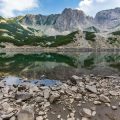1. Understanding the Leave No Trace Principles
Leave No Trace (LNT) is a set of seven core principles designed to help everyone who enjoys the outdoors reduce their impact on the environment. These guidelines are especially important in American wilderness areas, where growing numbers of visitors can easily harm fragile landscapes if not careful. By following Leave No Trace, outdoor enthusiasts protect natural beauty, wildlife habitats, and the wild experience for future generations.
The Seven Principles of Leave No Trace
| Principle | Description | Cultural Relevance in the U.S. |
|---|---|---|
| Plan Ahead and Prepare | Know your route, check weather, and pack appropriately to avoid emergencies and environmental damage. | Promotes self-reliance—a key value in American outdoor culture. |
| Travel and Camp on Durable Surfaces | Stick to trails and established campsites to prevent erosion and protect plant life. | Respects public lands that Americans cherish as national treasures. |
| Dispose of Waste Properly | Pack out all trash, leftover food, and litter to keep wilderness areas pristine. | Reflects American values of stewardship and civic responsibility. |
| Leave What You Find | Avoid picking plants or taking rocks and artifacts so others can enjoy them too. | Emphasizes fairness and shared access, which are important in U.S. recreation ethics. |
| Minimize Campfire Impact | Use a camp stove or established fire rings to reduce wildfire risk and scarring of the land. | Responds to increasing wildfire concerns in the United States. |
| Respect Wildlife | Observe animals from a distance; do not feed them or disturb their habitat. | Shows appreciation for Americas diverse wildlife heritage. |
| Be Considerate of Other Visitors | Keep noise down, yield on trails, and maintain a friendly attitude to support a positive outdoor community. | Encourages inclusivity and respect among America’s diverse outdoor users. |
The Importance of LNT in Preserving Americas Wilderness
The Leave No Trace principles serve as a cultural cornerstone for American outdoor recreation. With millions visiting national parks, forests, and other wild places every year, these guidelines help minimize human impact. They preserve scenic views, water quality, and biodiversity—qualities that make America’s wilderness unique. Following LNT isn’t just about rules; it’s about showing respect for the land and each other, upholding traditions that have defined outdoor adventure in the United States for generations.
2. The Role of Navigation Skills in Outdoor Ethics
When exploring Americas vast wilderness areas, knowing how to navigate is about more than just finding your way—it’s a key part of protecting the environment and following Leave No Trace (LNT) principles. Good navigation skills help you avoid getting lost, keep you safe, and make sure your outdoor adventures have as little impact on nature as possible.
How Navigation Skills Prevent Environmental Impact
Every year, hikers and backpackers unintentionally harm wild places by wandering off established trails or creating new paths when they lose their way. This can damage fragile plants, disturb wildlife habitats, and lead to soil erosion. By using navigation tools like maps, compasses, and GPS devices correctly, you stay on track and avoid harming the landscape.
| Navigation Tool | Main Benefit | LNT Connection |
|---|---|---|
| Map & Compass | Reliable in remote areas, no batteries required | Keeps you on official trails, reduces off-trail travel |
| GPS Device/Phone App | Easy location tracking & route planning | Helps avoid sensitive zones & private lands |
| Trail Markers & Signs | Visual cues to stay on course | Prevents creation of social trails (unofficial shortcuts) |
Enhancing Trip Safety Through Navigation
Good navigation is essential for safety in American backcountry settings. If you know where you are and where you’re going, you’re less likely to get lost or put yourself in risky situations. This means fewer search-and-rescue operations—which can be disruptive to wildlife and the environment—and a better chance of having a positive outdoor experience.
Quick Tips for Navigating Responsibly:
- Plan Ahead: Study maps and routes before your trip.
- Cary Backups: Always bring a compass or backup battery for GPS devices.
- Avoid Shortcuts: Stick to marked trails even if a shortcut looks tempting.
- Know Your Limits: Choose routes that match your skill level.
Navigation Aligns with the Spirit of Leave No Trace
The heart of Leave No Trace is respect—for nature, wildlife, and future visitors. When you use navigation skills effectively, you not only protect wild places but also set a good example for others. In America’s national parks and wilderness areas, responsible navigation means enjoying the outdoors while keeping it beautiful for everyone who comes after you.

3. Practical Navigation Strategies for Minimizing Impact
Staying on Durable Surfaces
When exploring America’s wilderness areas, one of the easiest ways to protect nature is by sticking to durable surfaces. Trails, rock, gravel, and dry grasses are less likely to be damaged by foot traffic. In popular destinations like Yosemite or the Appalachian Trail, always use established paths and campsites to avoid trampling fragile plants or causing soil erosion.
| Surface Type | Impact Level | Recommended Action |
|---|---|---|
| Established Trails | Low | Stay on trail; avoid shortcuts |
| Rock/Gravel | Low | Use when off-trail travel is necessary |
| Mud/Snow | Moderate | Tread lightly; avoid if possible |
| Vegetation/Meadow | High | Avoid walking or camping here |
Route Planning to Reduce Impact
Good navigation starts before you hit the trail. Research your route with up-to-date maps and GPS tools. In U.S. wilderness areas such as Rocky Mountain National Park or Zion, planning helps you stick to marked trails and avoid getting lost—reducing the chance of making new trails that damage the landscape.
- Download official trail maps: Many U.S. parks provide free maps online.
- Use GPS apps: Apps like AllTrails or Gaia GPS can keep you on course.
- Avoid “social trails”: These are unmarked paths formed by repeated use and often harm wildlife habitats.
- Plan rest stops at durable sites: Look for established campsites or rocky outcrops instead of soft meadows.
Avoiding Sensitive Habitats
Certain areas in the American wilderness are more vulnerable than others. Wetlands, wildflower meadows, and alpine tundra can take years to recover from just a few footsteps. Use your navigation skills to steer clear of these places, especially during wet seasons when ground cover is most delicate.
- Identify sensitive zones: Check park websites for habitat information before your trip.
- Select alternative routes: If you must go off-trail, choose durable surfaces like rocks or sandbars.
- Avoid wildlife nesting areas: Spring and early summer are critical times for many species in U.S. parks.
Quick Tips for Navigation with Leave No Trace in Mind:
- Follow blazes and markers—don’t make your own signs.
- If hiking in a group, walk single file on narrow trails to minimize widening paths.
- If you get lost, backtrack rather than cutting cross-country.
- Campsites should be at least 200 feet from lakes and streams to protect water sources.
4. Educating and Empowering Hikers
Building Skills Through Outdoor Education Programs
Across the United States, outdoor education programs are key to helping people develop both navigation skills and a strong understanding of Leave No Trace (LNT) principles. Many schools, colleges, and nonprofit organizations offer courses that teach map reading, compass use, GPS basics, and how to plan routes safely. These lessons are often combined with LNT training—so while hikers learn to find their way in the wild, they also learn how to minimize their impact on nature. Instructors often use real-life scenarios and hands-on practice in local parks or wilderness areas to make learning fun and memorable.
Popular Educational Program Elements
| Program Element | Navigation Skills | LNT Awareness |
|---|---|---|
| Classroom Sessions | Map & Compass Basics | LNT Principles Overview |
| Field Exercises | Route Finding & Practice Hikes | Impact Assessment & Cleanup Activities |
| Workshops & Clinics | GPS Technology Use | Sustainable Camping Techniques |
| Group Discussions | Trip Planning Scenarios | Problem-Solving Ethical Dilemmas |
The Role of Guide Services in Skill Development
Professional guide services play a big part in teaching safe travel and responsible recreation in America’s wilderness areas. Guides introduce clients to practical navigation tools like maps, compasses, and digital apps during hikes and backpacking trips. At the same time, they demonstrate best practices for leaving no trace—showing how to stay on trails, pack out trash, and respect wildlife. Many guide companies now include short LNT briefings before every trip, making sure everyone is on the same page about caring for the land.
Common Practices by Guide Services
- Pre-Trip Briefings: Cover route plans and LNT reminders before heading out.
- On-the-Trail Teaching: Offer real-time lessons on reading terrain and minimizing impact.
- Post-Trip Reviews: Discuss what worked well and how to improve for next time.
- LNT Certifications: Encourage clients to earn official Leave No Trace certifications.
Community Initiatives and Peer Learning
A lot of learning happens informally through local hiking clubs, meetup groups, and online forums. Community-led events like “Trail Skills Days” or “LNT Awareness Hikes” bring people together to swap stories, share tips, and practice new skills. Volunteer trail crews often blend navigation tasks—like mapping new routes—with stewardship work such as litter pickup or trail repair. These grassroots efforts help spread good habits quickly across all experience levels.
Examples of Community Initiatives:
- LNT Workshops: Free classes hosted at local gear shops or visitor centers.
- Youth Outdoor Clubs: Programs for kids and teens that mix orienteering games with LNT projects.
- Online Challenges: Social media campaigns encouraging hikers to log cleanups or share navigation tips.
- Pledge Drives: Encouraging members to commit publicly to responsible hiking practices.
Together, these educational approaches ensure that American hikers not only know how to find their way in the backcountry but also understand how to protect these treasured places for future generations.
5. Fostering a Culture of Stewardship
Understanding Stewardship in the American Wilderness
Stewardship is all about taking care of our public lands, making sure they’re protected for future generations to enjoy. In the United States, this idea is deeply woven into outdoor culture—from the backcountry trails of Yosemite to the wild spaces of the Appalachian Mountains. When hikers combine strong navigation skills with Leave No Trace (LNT) principles, they’re not just protecting nature—they’re becoming active stewards of these shared spaces.
How Navigation Skills and LNT Build Responsible Hikers
Navigation isn’t just about reading a map or using a GPS; it’s about making choices that minimize your impact on the land. When hikers know exactly where they are and how to get where they’re going, they avoid trampling sensitive areas, getting lost, or accidentally creating new trails. This careful approach aligns perfectly with LNT’s guidelines.
| Navigation Skill | LNT Principle Supported | Stewardship Outcome |
|---|---|---|
| Route Planning | Plan Ahead and Prepare | Reduces crowding and protects fragile environments by spreading out use |
| Staying on Trails | Travel and Camp on Durable Surfaces | Prevents trail widening and habitat damage |
| Avoiding Shortcuts | Minimize Campfire Impacts & Respect Wildlife | Keeps animal habitats intact and reduces soil erosion |
| Reading Terrain Features | Dispose of Waste Properly & Leave What You Find | Avoids disturbing archaeological sites and delicate ecosystems |
Promoting Ongoing Care Through Example and Education
When hikers show others how navigation fits with Leave No Trace, they inspire a ripple effect. Whether it’s teaching kids in a scout troop how to use a compass without cutting through a meadow, or reminding friends to stick to the main trail during a weekend hike, each action encourages a deeper respect for public lands. Sharing tips at trailheads or on social media also helps spread this stewardship mindset throughout the hiking community.
The American Approach: Community and Responsibility
In American wilderness culture, stewardship means more than following rules—it’s about pride in keeping wild places wild. By mastering navigation and practicing Leave No Trace every time we head outdoors, we help make sure America’s trails and parks remain beautiful and open for everyone. This creates a lasting legacy of care, responsibility, and love for the land.


